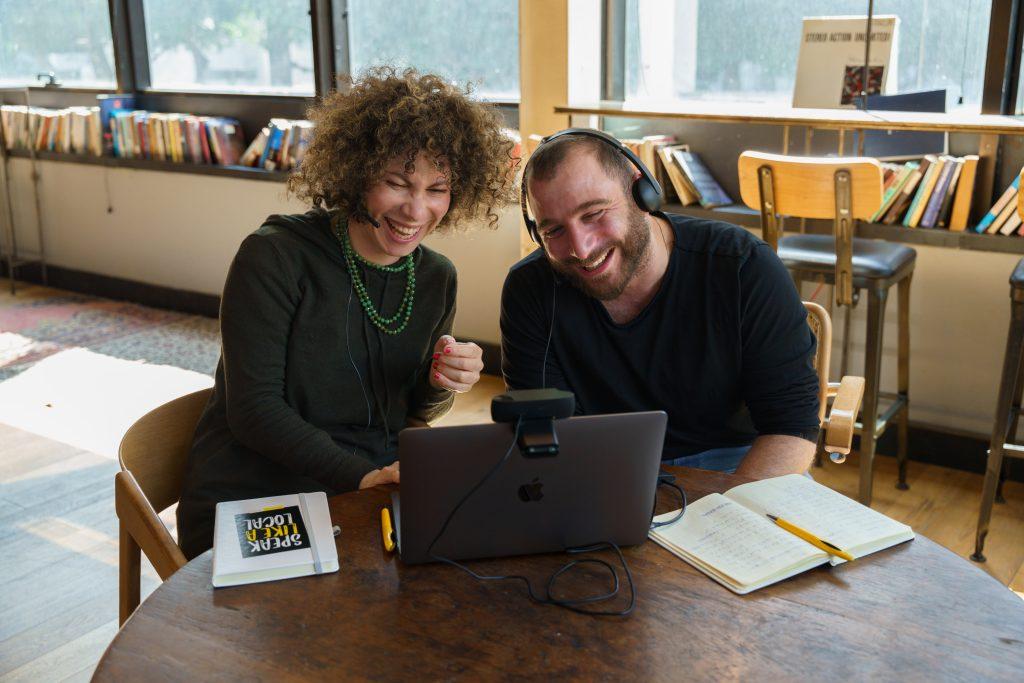First thing you notice when you start learning Hebrew is that it’s a very gendered language. Not only regarding its pronouns (you/he/she/they), but also every object in Hebrew has a gender (!) whether it’s animate or inanimate. This is quite shocking, I know, but the good news is there are some guidelines you can follow that will help you determine whether the noun is masculine or feminine – with some exceptions of course… If you follow these general rules, speaking will become much easier:
Starting with the Pronouns
In first person (I\we) the pronoun is the same whether the speaker is male or female:
I – אני (ah-nee)
We – אנחנו (ah-nahch-noo)
Once you move to second and third person, it changes:
You (masculine singular) – אתה (ah-tah)
You (feminine singular) – את (aht)
You (masculine plural) – אתם (ah-tehm)
You (feminine plural) – אתן (ah-tehn)
He – הוא (hoo)
She – היא (hee)
They (masculine) – הם (hehm)
They (feminine) – הן (hehn)
This means that Hebrew verbs are conjugated differently according to the pronoun, in all three tenses (present, past, future). You might want to keep this in mind when approaching Hebrew for the first time. Unfortunately, we can’t cover all of that here – that’s what our courses are for ?
How to Tell if a Noun is Masculine or Feminine
First of all, it’s important to know whether a noun is masculine or feminine because when you describe it, the adjective has to correspond with its “gender”. In English you’d say without a second thought: A big table, A big store. But in Hebrew you have to differentiate: שולחן גדול(shool-chan gah-dohl) and חנות גדולה(cha-noot gdoh-lah) because “table” is a masculine noun and “store” is a feminine noun.
So how can you tell the difference?? The first rule is – do not talk about fight club. I’m kidding, the first rule is – if it’s not a masculine noun, it’s a feminine noun. And feminine nouns usually fit into one of the following categories:
Ends with ה or ת
If a noun ends with one of these letters, in most cases it’s feminine.
For example:
Love אהבה (ah-hah-vah)
Meeting פגישה (pgee-shah)
Manager (f.) מנהלת (meh-nah-heh-leht)
Unfortunately there are some exceptions:
- Some words in Hebrew end with the letter ת and are masculine, such as crossroad צומת (tsoh-meht)
- Some words end with ט (which sounds exactly like ת) and are masculine too, such as pen עט (eht)
And other words may sound feminine because they end with an AH sound, but they actually end with the letter ע and are masculine. Some examples are:
Hat כובע (koh-vah)
Week שבוע (shah-voo-ah)
Moment רגע (reh-gah)
Has the Plural וֹת (OHT)
Many feminine words have an OHT sound in their plural form, which indicates they are feminine. For example:
Meetings פגישות (pgee-shoht)
Stairs מדרגות (mahd-reh-goht)
But some masculine nouns have this OHT ending in their plural form as well (just to keep things interesting):
Places מקומות (meh-koh-moht)
Tables שולחנות (shool-chah-noht)
It’s annoying, but the more you practice these exceptional nouns, the more you’ll remember they are masculine.
Pairs of Body Parts (or more)
This is a nice rule that applies to 90% of body parts: If you have two or more of these in your body, they are grammatically feminine. If you have just one – usually it’s a masculine noun. So even if they don’t “sound” feminine, these are some feminine body parts:
Leg רגל (reh-gehl)
Hand יד (yahd)
Tooth שן (shehn)
Eye עין (ah-yeen)
When you have just one of them (thank god) they are grammatically masculine:
Head ראש (rohsh)
Back גב (gahv)
Heart לב (lehv)
Some interesting exceptions to this rule are stomach בטן (beh-tehn) which is feminine, and breasts שדיים (shah-dah-yeem) which are oddly masculine!
In addition to the categories mentioned above, these nouns are also always feminine in Hebrew:
- Names of Cities
- Names of Countries
- Languages
Biological Gender
Now that we’ve finished covering the Hebrew pronouns and some ways to determine whether a noun is masculine or feminine, it’s time to talk about gender itself! You’ve probably wondered how to describe a person according to their age and sex, so here’s a short guide that will help you make sense of it all:
Male זכר (zah-chahr)
Female נקבה (neh-keh-vah)
These are more scientific terms, used to describe words or species (not to describe a person). If you want to describe people, use these words:
Boy בן (behn) Boys בנים (bah-neem)
Girl בת (baht) Girls בנות (bah-noht)
Guy/Young man בחור (bah-choor)
Young woman בחורה (bah-choo-rah)
Man גבר (geh-vehr) Men גברים (gvah-reem)
Woman אישה (ee-shah) Women נשים (nah-sheem)
When a word describes a female, you can safely assume that it is feminine, and the other way around. By the way, have you noticed the plural form women has the masculine plural ending – נשים (nah-sheem)? Oy vey zmir!
Wow, that was a lot of information! We hope this was helpful.
For more tips and Hebrew hacks you’re welcome to try one of our one-on-one sessions with one of our lovely teachers ?









